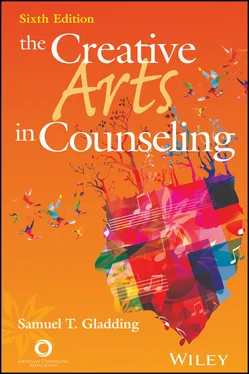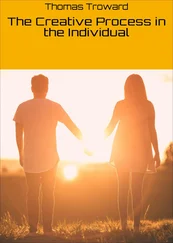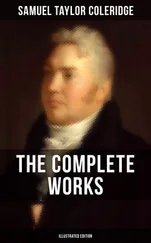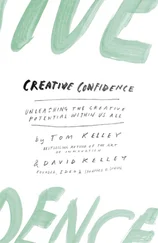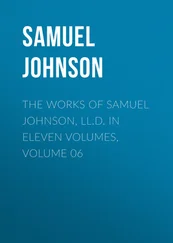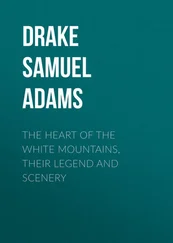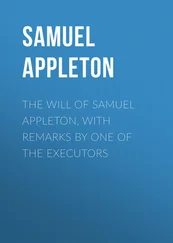Samuel T. Gladding - The Creative Arts in Counseling
Здесь есть возможность читать онлайн «Samuel T. Gladding - The Creative Arts in Counseling» — ознакомительный отрывок электронной книги совершенно бесплатно, а после прочтения отрывка купить полную версию. В некоторых случаях можно слушать аудио, скачать через торрент в формате fb2 и присутствует краткое содержание. Жанр: unrecognised, на английском языке. Описание произведения, (предисловие) а так же отзывы посетителей доступны на портале библиотеки ЛибКат.
- Название:The Creative Arts in Counseling
- Автор:
- Жанр:
- Год:неизвестен
- ISBN:нет данных
- Рейтинг книги:3 / 5. Голосов: 1
-
Избранное:Добавить в избранное
- Отзывы:
-
Ваша оценка:
- 60
- 1
- 2
- 3
- 4
- 5
The Creative Arts in Counseling: краткое содержание, описание и аннотация
Предлагаем к чтению аннотацию, описание, краткое содержание или предисловие (зависит от того, что написал сам автор книги «The Creative Arts in Counseling»). Если вы не нашли необходимую информацию о книге — напишите в комментариях, мы постараемся отыскать её.
*To purchase print copies, please visit the ACA website here
*Reproduction requests for material from books published by ACA should be directed to permissions@counseling.org
The Creative Arts in Counseling — читать онлайн ознакомительный отрывок
Ниже представлен текст книги, разбитый по страницам. Система сохранения места последней прочитанной страницы, позволяет с удобством читать онлайн бесплатно книгу «The Creative Arts in Counseling», без необходимости каждый раз заново искать на чём Вы остановились. Поставьте закладку, и сможете в любой момент перейти на страницу, на которой закончили чтение.
Интервал:
Закладка:
—Gladding, 1991b/2003
Chapter Overview
From reading this chapter you will learn about
The importance to human health of music
The difference between music therapy and music in counseling
The way music is used with clients of different ages and in different settings across the life span
As you read, consider
Whether you have ever been moved by a piece of music
What your favorite type of music is and what it is about it that appeals to you
How you think music can affect the world for better or worse (be specific!)
Music is a universal multicultural experience that is respected, appreciated, and potent, with at least 15 countries recognizing its transformative abilities through having established their own music therapy associations (Grimmer & Schwantes, 2018). Music can serve as a bridge to the development of new insights, behaviors, and coping skills (J. M. Brown, 2001; Silverman, 2018). It is effective at altering moods in a positive direction, especially if it is self-selected and the individual doing the selection is not depressed (Garrido et al., 2016).
Music is most simply described as “the appreciation of sound” (Beaulieu, 1987, p. 13). Making music is a creative act, as is listening in an active way (Sackett & Edwards, 2020). Both involve being sensitive and responsive to the cacophony of rhythm that occurs spontaneously in nature and purposely in human interactions (Schneck & Berger, 2006). At its most basic level, music is a nonverbal medium. It has been used in various ways since the beginning of time to communicate and express feelings in a variety of ways (Duffey & Haberstroh, 2013; Gfeller, 2002b; Silverman, 2008). Indeed, many civilizations and people have been defined by the types of music they have developed (e.g., classical music) and the part that music has played in their lives. On a global level, some of today’s popular music is significant in creating a sense of cultural identity (e.g., hip-hop or rap). The following thought is attributed to Plato:
Music gives a soul to the universe, wings to the mind, flight to the imagination and life to everything.
Music creates an atmosphere either for better or for worse. Stimulating background music seems to detract from the formation of initial counseling interactions, whereas soothing music seems to promote interaction. A specific song or genre of music may cue an urge to use substances among individuals who are addicted (Dingle et al., 2015). However, music can also be a powerful adjunct in reducing depression and resolving generalized anxiety disorder (Esfandiari & Mansouri, 2014; Gutiérrez & Camarena, 2015). Music that is liked, regardless of one’s familiarity with it, is the most important factor in reducing anxiety (Jiang et al., 2016). Overall, music can elicit a wide range of mental, emotional, physical, and spiritual responses and is a fundamental component of many people’s lives.
Research on the effects of music is strong (Stephensen & Baker, 2016), and some studies indicate that music has the capacity to facilitate healing by influencing brain activity and creating and altering moods (Schweitzer, 2014). Music can facilitate the expression of emotions and reduce stress; it helps us tell our stories and process our experiences (Avent, 2016; Duffey, 2015). Music is used to capture attention, elicit memories, communicate feelings, and create a sense of community (Mandsager et al., 1997). It can help in the resolution of grief and abuse, increase intimacy between partners, be of assistance in identifying competing interests, and differentiate people (Duffey et al., 2001). Music is linked specifically with helping individuals convey thoughts and feelings, alter behaviors, and reduce unhelpful behaviors (Minor et al., 2013). Simply put, music is the soundtrack of our lives. William Styron (1990), the author of Sophie’s Choice , found music to be a lifesaver in his battle with depression and suicidal ideation. His experience is not unique.
Many populations who have been victims of abuse have developed distinct musical forms, such as Blacks’ creation of spiritual gospels and the blues. This type of music has provided an outlet for their individual and collective expressions of pain. Other groups have created different sounds that express the essence of their experiences and perceptions. In the United States the great diversity of sound includes rock and roll, bluegrass, hip-hop, rap, beach, jazz, country, classical, and big band music. An even wider variety of sound exists internationally, such as samba, reggae, and waltz.
Creative Reflection
What is your favorite type of music? How has it influenced your life? How do you think it might be therapeutic for you or for others?
According to Peters (2001), “Corporations such as MUZAK have made a business out of supplying background music to positively influence and regulate people’s moods and behaviors in offices, busi nesses,” and other environments (pp. 31–32). The influence of music in daily life is truly phenomenal. Even though people may not always remember lyrics, they seem to be influenced by “the beat, the rhythm, [and] the sound” of music they listen to regularly (A. White, 1985, p. 67). For many ordinary people, “music is the most significant experience in life” (Storr, 1992, p. 168).
Overall, music allows feelings to be revealed that may not be defined in words. In essence, music “is a form of communication analogous to speech in that it has cadences and punctuation” (D. Aldridge, 1989, p. 93). For example, new age music, which makes use of long themes and slow tempos, expresses a sentiment and affect that cannot be translated into a verbal equivalent. Music is seen as a therapeutic ally to verbal approaches to counseling because it links people together and gives them a common denominator (Rosenblatt, 1991).
In this chapter, I explore the multidimensional premise behind the power of music as well as the practical use of music in counseling. I distinguish between music therapy and the use of music in counseling. For instance, music therapy, which is much more formal, is the use of music within a therapeutic relationship to address physical, emotional, cognitive, and social needs of individuals. In addition, I explain and illustrate how music can be used with a variety of populations (from children to older adults) and in various settings (from clinics to educational environments). The use of music with other creative arts is also discussed.
Premise Behind the Use of Music in Counseling
Although all creative arts help foster a link between the inner world of the person and outside reality, music “enhances this process by requiring time-ordered and ability-ordered behavior, evoking affective response and increasing sensory input. Music also requires self-organization and provides an opportunity for socialization” (Wager, 1987, p. 137). Music creates an atmosphere. It can elicit a wide range of mental, emotional, physical, and spiritual responses. Thus, music serves multiple purposes in helping individuals become more aware, able, confident, and social.
The importance of music to human health has long been recognized (Lingerman, 1995; Thaut, 2009). Throughout history, music has been used therapeutically. Hanser (1988) wrote, “The field of music therapy is based largely on claims of the sedative results music produces and the psychological impact of the musical experience” (p. 211). Documentation worldwide shows that music played a major role in healing and nurturing people from ancient cultures (J. J. Moreno, 1988b). M. E. Miller (1991) noted that “Homer recommended it to stave off negative emotions, and Pythagoras and Plato said a daily dose could improve one’s general well-being” (p. 1E). Shamans have used “hypnotic and rhythmic music” (J. J. Moreno, 1987, p. 335) to help achieve emotional highs, a tradition that continues today in most cultures. Qualitative data support the importance of music and music therapy in meeting spiritual needs: Music and music therapy help participants feel closer to God and elevate their moods, especially when they are in hospital settings (Cook & Silverman, 2013).
Читать дальшеИнтервал:
Закладка:
Похожие книги на «The Creative Arts in Counseling»
Представляем Вашему вниманию похожие книги на «The Creative Arts in Counseling» списком для выбора. Мы отобрали схожую по названию и смыслу литературу в надежде предоставить читателям больше вариантов отыскать новые, интересные, ещё непрочитанные произведения.
Обсуждение, отзывы о книге «The Creative Arts in Counseling» и просто собственные мнения читателей. Оставьте ваши комментарии, напишите, что Вы думаете о произведении, его смысле или главных героях. Укажите что конкретно понравилось, а что нет, и почему Вы так считаете.
